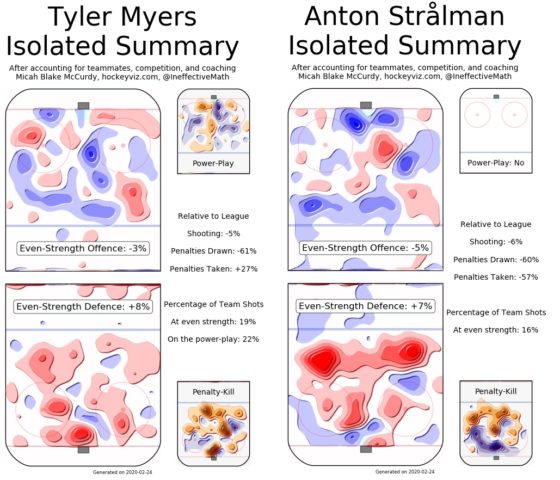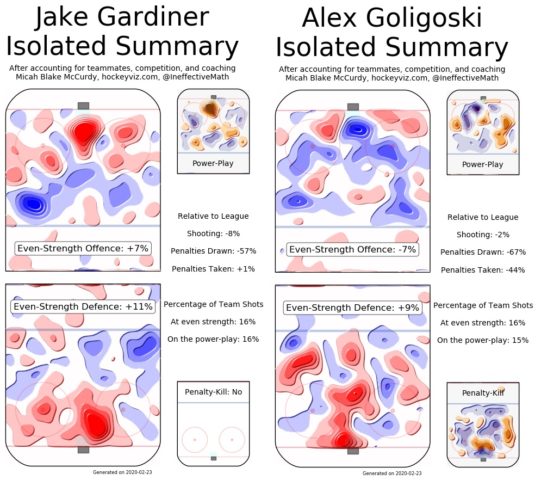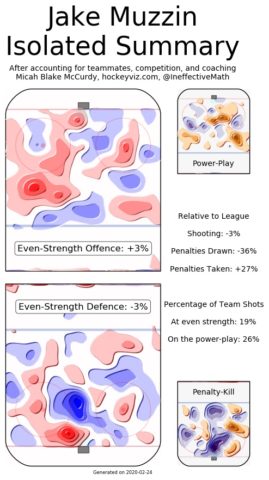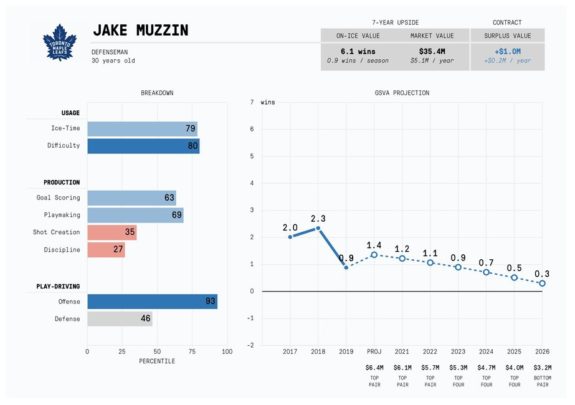Similar to last year, the Toronto Maple Leafs didn’t do much during the trade deadline, even though there was much speculation regarding the movement of pending unrestricted free agent defenceman Tyson Barrie. Instead, shortly after the deadline passed, the Maple Leafs finally made official the anticipated extension for their stalwart defender Jake Muzzin.
While addressing the media after the deadline, general manager Kyle Dubas had this to say regarding the extension:
Jake’s importance here, I think as a lot of people have seen, especially as things haven’t gone well, is immense on the ice and off. It was very apparent when he was out of the lineup, that we missed him deeply.
Perhaps the timing of announcing the extension was too perfect, and it was an attempt to distract angry fans for staying put with their roster after Saturday’s embarrassing loss to the Carolina Hurricanes.
However, it is likely a result of the Maple Leafs’ front office truly not knowing what would have happened before the deadline. There are rules set regarding how much salary you can have tied up in future seasons (something known as tagging room, detailed here for those interested).
Muzzin’s extension comes in at four years, $22.5 million — $5.625 million average annual value (AAV), 6.9% of the salary cap. Like with many of their recent signings, the Maple Leafs flexed their financial muscles, with $16.8 million of his pay coming from signing bonuses.

Four years is also a good length to sign an aging defenceman, especially one who plays a physical style like Muzzin. The contract comes with a no-movement clause in the first year, and then a 10-team no-trade clause. This means that Muzzin can be exposed in the Seattle expansion draft next year.
It also allows the Maple Leafs to not completely require Muzzin’s permission should they desire to move him towards the end of the contract. The large amount of signing bonuses would make the contract easier to move as well. Likely not a coincidence.
Muzzin Shines Against Contract Comparables
Muzzin’s closest contract comparables are mostly players that have signed new contracts starting this season. I found these contracts using Cap Friendly’s wonderful contract comparable tool.
According to them, the players who have contracts most comparable to Muzzin’s new deal are:
- Tyler Myers: 5 years, $6 million AAV (7.36% of salary cap)
- Anton Strålman: 3 years, $5.5 million AAV (6.75% of salary cap)
- Jake Gardiner: 4 years, $4.05 million AAV (4.97% of salary cap)
- Alex Goligoski: 5 years, $5.475 million AAV (7.50% of the salary cap)
Using the isolated threat model created by Micah Blake McCurdy of HockeyViz, let’s compare these four players to Muzzin this season.


From these charts, all players mentioned above are worse than league average defensively (7%-11% worse), according to Micah’s model. With the exception of Gardiner, they are all worse than league average offensively, as well (3%-7% worse).
Muzzin, on the other hand, has been able to find success this season, posting positive numbers in both ends of the ice.

It extends beyond just this season, though. Muzzin has posted positive numbers at both ends of the ice throughout the bulk of his career. This bodes well for a Maple Leafs team that is, at best, average on the blue line. Muzzin’s contract is also the most economical of the bunch (outside of Gardiner’s), which is another positive situation for a team that has been flirting with the salary cap all season long.
Muzzin’s Contract to Provide Value Over Entire Term
Muzzin, currently 31, will be 35 when his new contract expires. How he will age over the length of that contract is almost as important as the value it is signed at.
Muzzin plays a physical style of hockey. He hits a lot, and also blocks a lot of shots. He currently wears two knee braces under his gear when playing. The concern about his health among fans and front offices is a real thing. However, the good news is that — barring any major injuries — Muzzin looks like he will age well.
Dom Luszczyszyn has created a model which attempts to judge how well a player will age. This model uses a metric known as Game Score Value Added (GSVA), also developed by Dom, which is used to estimate player ability in a single number. In essence, if a player has a positive number on the chart, they are impacting their team positively. The larger the number, the greater their impact is.
What Dom’s aging model does is attempt to predict how this number will change for players as they age. It shows that for Muzzin, he has already started to decline. However, his numbers are still quite good, and should be for the duration of his contract.

The prediction also takes into account a lot of important information, like the fact that Muzzin plays against top competition and logs a ton of minutes on a nightly basis. If he can meet these estimates proposed by Dom, he will be a top-four defenceman for the duration of his contract. Not bad for a player locked up at $5.625 million per year.
With the Muzzin extension finalized, the Maple Leafs now have five defencemen under contract for next season, assuming Rasmus Sandin and Timothy Liljegren play full-time in NHL next year. The other two are Morgan Rielly and Justin Holl. Travis Dermott is an RFA, who plays primarily on the left side, which creates a bit of a logjam for the Maple Leafs.
With Rielly, Muzzin, and Sandin also all playing on the left side, is it possible we see Dermott moved at the draft in a package for high-end, right-handed defenceman? The possible defence would look like this:
Rielly – Acquired RHD
Muzzin – Holl
Sandin – Liljegren
That looks pretty good to me, provided Sandin and Liljegren continue to develop properly. However, only time will tell how Dubas attempts to solve the age-old problem that is the Maple Leafs’ defence.
Get the latest Toronto Maple Leafs news, rumors, commentary and analysis